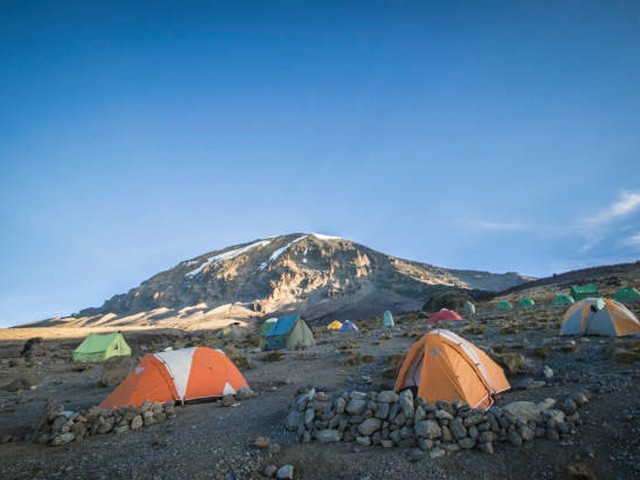Capturing the Summit: Photography Equipment Essentials For Kilimanjaro Climbs
Mount Kilimanjaro is not only a mountaineer’s paradise but also a photographer’s dream. With its snow-capped peak, stunning landscapes, and diverse wildlife, the journey to its summit is filled with unparalleled opportunities for capturing nature’s beauty. Whether you’re a seasoned photographer or a passionate beginner eager to document your climb, knowing the right photography equipment to bring along is crucial for making the most out of your Kilimanjaro experience. Here at Kilimanjaro Centre for Trekking and Ecotourism (KCTE), we understand the importance of these moments, and we’re here to guide you through selecting the perfect photography gear for your adventure.
Why the Right Photography Equipment Matters on Kilimanjaro
Climbing Kilimanjaro offers a unique challenge not only physically but also in terms of capturing the essence of your journey through photography. The diverse altitudes, varying climatic conditions, and dramatic changes in landscapes call for specific equipment to effectively document every phase of your trek. From the lush rainforests of Marangu to the stark, moon-like terrain near the summit, each zone offers distinct photographic subjects and challenges.
Choosing Your Camera: DSLR vs. Mirrorless
DSLR Cameras
Known for their reliability and versatility, DSLR cameras are a popular choice among many mountain climbers. They offer superior image quality, battery longevity, and a robust design suitable for the harsh conditions of high-altitude environments. Models like the Canon EOS 5D Mark IV or Nikon D850 are famed for their performance in diverse conditions.
Mirrorless Cameras
If carrying less weight is a priority, mirrorless cameras make an excellent choice. These cameras provide comparable image quality to DSLRs but are more compact and lighter – a significant advantage on a strenuous climb like Kilimanjaro. The Sony Alpha series and the Fujifilm X-T series are excellent examples, offering fantastic image quality and a range of lenses suitable for mountain photography.
Essential Lenses for Capturing Kilimanjaro’s Majesty
Wide-Angle Lens
A wide-angle lens is indispensable for landscape photography on Kilimanjaro. It allows you to capture expansive landscapes and dramatic skies, or shoot in tight spaces like the huts or tents. Recommended lenses include the Canon 16-35mm f/2.8 or the Nikon 14-24mm f/2.8.
Telephoto Lens
To compress distances and capture subjects that are far away, such as wildlife or distant landscapes, a telephoto lens is invaluable. A lens like the Canon 70-200mm f/2.8 or the Nikon 70-200mm f/2.8 will offer excellent zoom capabilities without compromising on image quality.
Standard Zoom Lens
For versatility, a standard zoom lens that covers a range of focal lengths, such as a 24-70mm, is a great all-rounder. It’s ideal for a variety of shots, from portraits of your climbing companions to detailed shots of the unique flora and fauna.
Must-Have Accessories for High-Altitude Photography
Tripod
A lightweight, sturdy tripod is crucial for stable shooting, especially in low-light conditions like sunrise or sunset. Carbon fiber tripods offer durability and lightness, essential for minimizing your load.
Extra Batteries and Memory Cards
Cold weather can drain battery life quickly, and running out of memory space is a photographer’s nightmare. Packing extra batteries and sufficient memory cards will ensure you’re always ready to capture that perfect shot.
Lens Filters
Polarizing filters can enhance the clarity and contrast of your photos by reducing glare and reflections, especially useful for snowy landscapes or bodies of water you’ll encounter.
Protective Gear
Ensure your camera and lenses are protected from the elements with waterproof bags or casing. Silica gel packets can help prevent lens fogging in the humid conditions of the rainforest zones.
Photography Tips While Climbing Kilimanjaro
- Golden Hours: Take advantage of the golden hours (shortly after sunrise and before sunset) for beautifully lit, dramatic landscape photographs.
- Wildlife and Flora: Use a telephoto lens to capture close-ups of Kilimanjaro’s wildlife and plants without disturbing them.
- Document the Journey: Capture not only the landscapes but also the human element of your climb. Photos of fellow climbers, local guides, and porters add depth to your storytelling.
Why Choose KCTE for Your Kilimanjaro Adventure
At Kilimanjaro Centre for Trekking and Ecotourism (KCTE), we not only provide expert guides and support for your climb but also understand the nuances of mountain photography. Our local knowledge ensures you’re at the right place at the right time to capture those breathtaking views and moments.
FAQ
What is the best time of year for photography on Kilimanjaro?
The best times are during the dry seasons, from June to October and from December to March, when skies are clearest and the mountain is most photogenic.
Can I rent photography equipment from KCTE?
Currently, we do not offer equipment rentals, but we can recommend reputable rental services nearby.
Are there any restrictions on using drones for photography on Kilimanjaro?
Yes, drone use is restricted in national parks in Tanzania, including Kilimanjaro National Park. Special permits are required.
Capture the Roof of Africa
Embarking on a climb up Kilimanjaro is an unforgettable adventure, and with the right photography equipment, you can capture every awe-inspiring moment. Remember, every picture tells a story and your Kilimanjaro climb will be filled with stories worth telling. Ready to take on Kilimanjaro and bring home photographs that will amaze and inspire? Book your climb with Kilimanjaro Centre for Trekking and Ecotourism (KCTE) today and let us help you make it possible.




